Identifying and Managing Plants That Cause Rashes: A Comprehensive Guide
What are the common plants that cause rashes. How can you identify poison ivy, oak, and sumac. What are the symptoms of plant-induced rashes. How can you prevent and treat plant rashes. Are there any myths about plant-induced rashes that need debunking.
Understanding Poisonous Plants: Ivy, Oak, and Sumac
Poison ivy, poison oak, and poison sumac are notorious for causing uncomfortable rashes. These plants are commonly found in wooded or marshy areas across North America. Despite their name, they aren’t actually poisonous. Instead, they produce a sticky, persistent oil called urushiol that triggers an itchy, blistering rash upon skin contact.
Even minimal contact with these plants can leave the oil on your skin. Poison ivy and poison oak typically grow as vines or shrubs, while poison sumac is usually found as a shrub or tree.
Identifying Poisonous Plants
Can you easily identify these troublesome plants? Here’s what to look for:
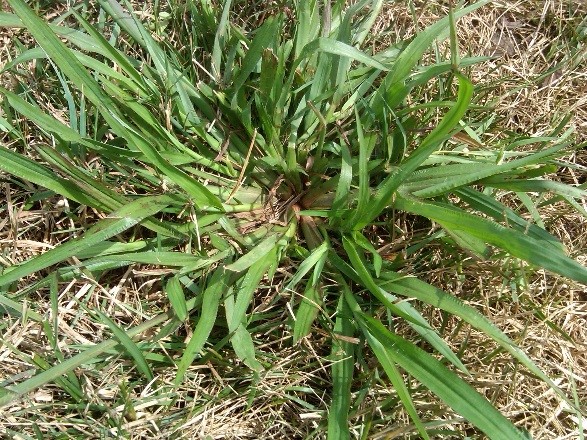
- Poison Ivy: Always has three leaves – one on each side and one in the center. The leaves are shiny with smooth or slightly notched edges.
- Poison Oak: Similar to poison ivy, but with larger, more rounded leaves resembling oak leaves. They have a textured, hairy surface and may appear in groups of three, five, or seven.
- Poison Sumac: Leaves grow in clusters of seven to 13, with one leaf by itself at the end.
The Truth About Plant-Induced Rashes
Plant-induced rashes can be distressing, but understanding their nature can help in managing them effectively. Does the rash appear immediately after contact?
The rash typically develops within 24 to 72 hours of contact, depending on the area of skin exposed. It usually reaches its peak within a week but can persist for up to three weeks. The rash appears as patches or streaks of red, raised blisters.
Is it possible for the rash to spread? Contrary to popular belief, the rash doesn’t usually spread unless urushiol is still in contact with your skin. This means that scratching a existing rash won’t cause it to spread to other parts of your body.

Preventive Measures Against Plant-Induced Rashes
Prevention is always better than cure when it comes to plant-induced rashes. How can you protect yourself from these plants?
- Cover your skin: Wear long-sleeved shirts, long pants, gloves, and closed shoes when in areas where these plants grow.
- Secure your clothing: Tie the bottoms of your pants legs or tuck them into your boots.
- Use dedicated outdoor shoes: Keep a pair of shoes specifically for outdoor use and store them outside.
- Apply protective lotion: Use a lotion containing bentoquatam, which acts as a barrier between urushiol and your skin.
Immediate Actions After Plant Contact
What should you do if you suspect contact with poison ivy, oak, or sumac? Time is of the essence as urushiol begins to stick to the skin within minutes. Here are the steps to take:
- Wash the affected area with lukewarm water and soap as soon as possible.
- If water isn’t available, use rubbing alcohol or alcohol wipes to remove the oil.
- Keep the area cool, dry, and clean.
- Wash any clothes that may have come into contact with the plant.
- Clean any tools or shoes that might have touched the plant.
Treatment Options for Plant-Induced Rashes
While there’s no cure for the rash itself, several treatments can help manage symptoms and provide relief. What are some effective treatment options?

- Keep the rash clean, dry, and cool.
- Apply calamine lotion to soothe the itch.
- Use over-the-counter antihistamines like diphenhydramine to reduce itching.
- Apply hydrocortisone cream to decrease inflammation.
- Take cool baths with baking soda or oatmeal to soothe the skin.
- Avoid scratching to prevent potential scarring or infection.
In severe cases, your doctor may prescribe oral medications to help with swelling and itching.
Debunking Common Myths About Plant-Induced Rashes
There are several misconceptions about plant-induced rashes that need clarification. Are these rashes contagious?
No, you cannot catch the rash from someone else, even if you come into contact with their blisters. The rash is a reaction to the urushiol oil, not an infection.
Does a lack of previous reactions mean you’re immune? Not necessarily. About 85% of people are allergic to urushiol, and sensitivity can develop at any age.
When to Seek Medical Attention
While most plant-induced rashes can be managed at home, there are instances when professional medical care is necessary. When should you consult a doctor?

- If the rash is near your eyes or widespread over your body
- If you experience severe reactions like nausea, fever, or shortness of breath
- If you have extreme soreness at the rash site or swollen lymph nodes
- If you have any trouble breathing or feel faint (call emergency services immediately in these cases)
Protecting Pets and Dealing with Contaminated Animals
Pet owners often wonder about the risk to their furry friends. Can pets get rashes from these plants?
A dog’s or cat’s fur usually protects their skin from urushiol. However, the oil can remain on their fur and transfer to humans. If your pet has been in an area where these plants grow, it’s advisable to bathe them with soap and cool water. Remember to wear gloves while doing so to protect yourself.
Handling Contaminated Plants Safely
How should you dispose of poison ivy, oak, or sumac on your property? Never burn these plants, as urushiol particles can remain in the smoke and cause respiratory issues or skin reactions. Instead:
:max_bytes(150000):strip_icc()/itchy-rash-plants-2132244_FINAL-5b8943cac9e77c007b53f425.png)
- Wear protective clothing and carefully dig out the plants, getting as much of the root as possible.
- Place the plants in a plastic trash bag and dispose of them.
- If you’re highly sensitive to these plants, have someone else handle this task.
- Consider using plant killers, but be sure to read the label carefully and use them at the appropriate time of year.
Remember, urushiol remains active even on dead plants, so handle with caution.
Advanced Prevention Techniques and Considerations
Beyond basic preventive measures, there are additional steps you can take to minimize your risk of exposure to urushiol. What are some advanced prevention techniques?
- Learn to identify these plants in different seasons. Their appearance can change throughout the year.
- Create a barrier around your property to prevent these plants from encroaching.
- Educate children about these plants and teach them the “leaves of three, let it be” rule.
- Consider using specialized soaps designed to remove urushiol oil after potential exposure.
Environmental Considerations
How do these plants impact the ecosystem? While they can be troublesome for humans, poison ivy, oak, and sumac play important roles in their natural habitats:

- They provide food and shelter for various wildlife species.
- Their berries are an important food source for birds.
- They help prevent soil erosion in some areas.
When managing these plants on your property, consider their ecological role and opt for targeted removal rather than widespread eradication.
Technological Advancements in Plant Identification and Treatment
How has technology improved our ability to deal with poisonous plants? Recent advancements have made identification and treatment more accessible:
- Smartphone apps can help identify poisonous plants using photo recognition technology.
- Wearable devices are being developed to alert users when they’re near known poisonous plant locations.
- New treatments are being researched, including potential vaccines against urushiol sensitivity.
These technological advancements offer promising solutions for both prevention and treatment of plant-induced rashes.
Global Perspective: Poisonous Plants Around the World
While poison ivy, oak, and sumac are prevalent in North America, other regions have their own problematic plants. What are some poisonous plants found in other parts of the world?

- Giant Hogweed: Found in Europe and North America, causes severe skin burns and potential blindness.
- Manchineel: Native to tropical parts of North and South America, all parts of this tree are extremely toxic.
- Gympie Gympie: Found in rainforest areas of northeast Australia, Indonesia, and Malaysia, causes intense pain that can last for months.
Understanding the poisonous plants in your region or travel destinations can help you stay safe and prepared.
Future Research and Developments
What does the future hold for managing plant-induced rashes? Ongoing research is focusing on several areas:
- Developing more effective barrier creams to prevent urushiol absorption.
- Exploring genetic factors that influence susceptibility to urushiol.
- Investigating potential immunotherapy treatments to reduce sensitivity.
- Studying the long-term effects of repeated exposure to urushiol.
These research directions may lead to improved prevention strategies and more effective treatments in the future.
Psychological Impact of Plant-Induced Rashes
Beyond the physical discomfort, how do plant-induced rashes affect individuals psychologically? The impact can be significant:
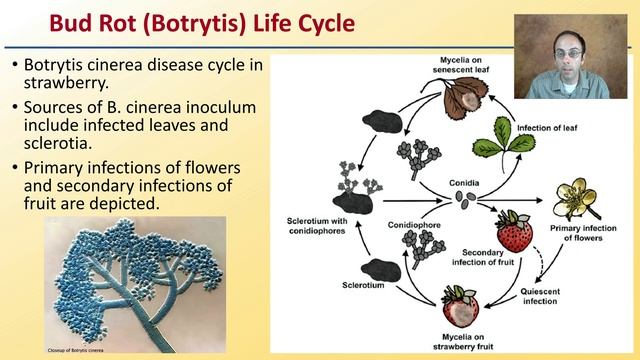
- Anxiety about outdoor activities
- Self-consciousness about visible rashes
- Frustration with the duration and recurrence of symptoms
- Sleep disturbances due to itching
Recognizing these psychological effects is crucial for comprehensive care. Support groups and counseling can be beneficial for those severely impacted by recurring rashes.
Economic Implications of Poisonous Plants
What are the economic impacts of poisonous plants like poison ivy, oak, and sumac? The effects are far-reaching:
- Healthcare costs for treating rashes and complications
- Lost productivity due to work absences
- Expenses related to plant removal and property management
- Impact on outdoor recreation and tourism in affected areas
Understanding these economic implications can help inform public policy and resource allocation for managing these plants.
Education and Awareness: Key to Prevention
How can we improve public awareness about poisonous plants? Education is crucial for prevention:
- Incorporate plant identification into school curricula
- Conduct community workshops on plant safety
- Develop informative signage for parks and hiking trails
- Utilize social media campaigns to spread awareness
By improving public knowledge, we can significantly reduce the incidence of plant-induced rashes and their associated impacts.
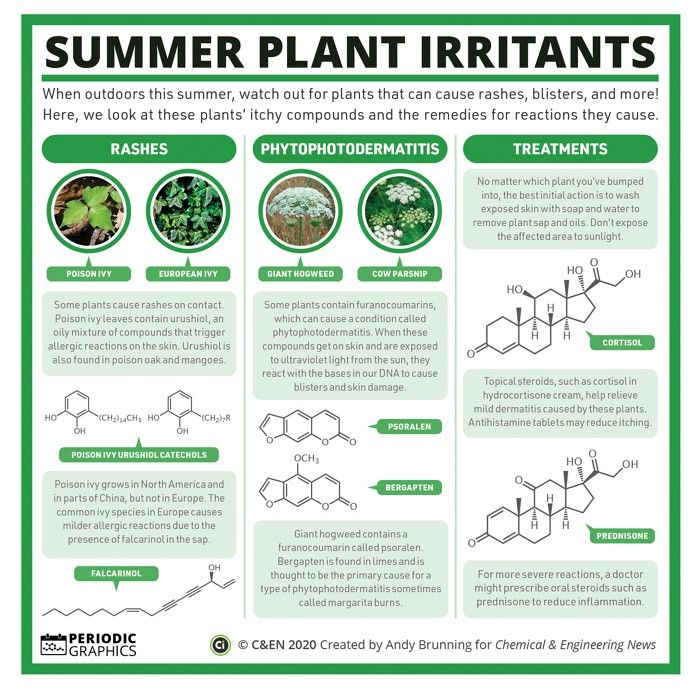
Pictures of Rashes & Plants
Medically Reviewed by Dan Brennan, MD on November 25, 2022
Fact. Poison ivy, poison oak, and poison sumac grow in wooded or marshy areas throughout North America. The plants aren’t really poisonous. They have a sticky, long-lasting oil called urushiol that causes an itchy, blistering rash after it touches your skin. Even slight contact, like brushing up against the leaves, can leave the oil behind. Poison ivy and poison oak grow as vines or shrubs. Poison sumac is a shrub or tree.
Myth. Poison ivy is the only one that always has three leaves, one on each side and one in the center. They’re shiny with smooth or slightly notched edges. Poison oak looks similar, but the leaves are larger and more rounded like an oak leaf. They have a textured, hairy surface. There may be groups of three, five, or seven leaves. Poison sumac leaves grow in clusters of seven to 13 leaves, with one by itself at the end.
Myth. It forms within 24 to 72 hours of contact, depending on where the plant touched you. It usually peaks within a week, but can last as long as 3 weeks. A rash from poison ivy, oak, or sumac looks like patches or streaks of red, raised blisters. The rash doesn’t usually spread unless urushiol is still in contact with your skin.
It forms within 24 to 72 hours of contact, depending on where the plant touched you. It usually peaks within a week, but can last as long as 3 weeks. A rash from poison ivy, oak, or sumac looks like patches or streaks of red, raised blisters. The rash doesn’t usually spread unless urushiol is still in contact with your skin.
Myth. It’s usually safe to breathe where poison plants grow. But if you burn them in your yard, the smoke could cause problems. When poison ivy leaves burn, they put out chemicals that can bother your eyes, nose, or lungs. You may need to see a doctor if you breathe the smoke. They’ll prescribe steroids to control your symptoms.
Fact. Keep your skin covered to avoid contact with these plants. Wear a long-sleeved shirt, long pants, gloves, and closed shoes if you’re in an area where they grow. Tie the bottoms of your pants legs or tuck them into your boots. Wear gloves when you handle bagged mulch or bales of pine straw.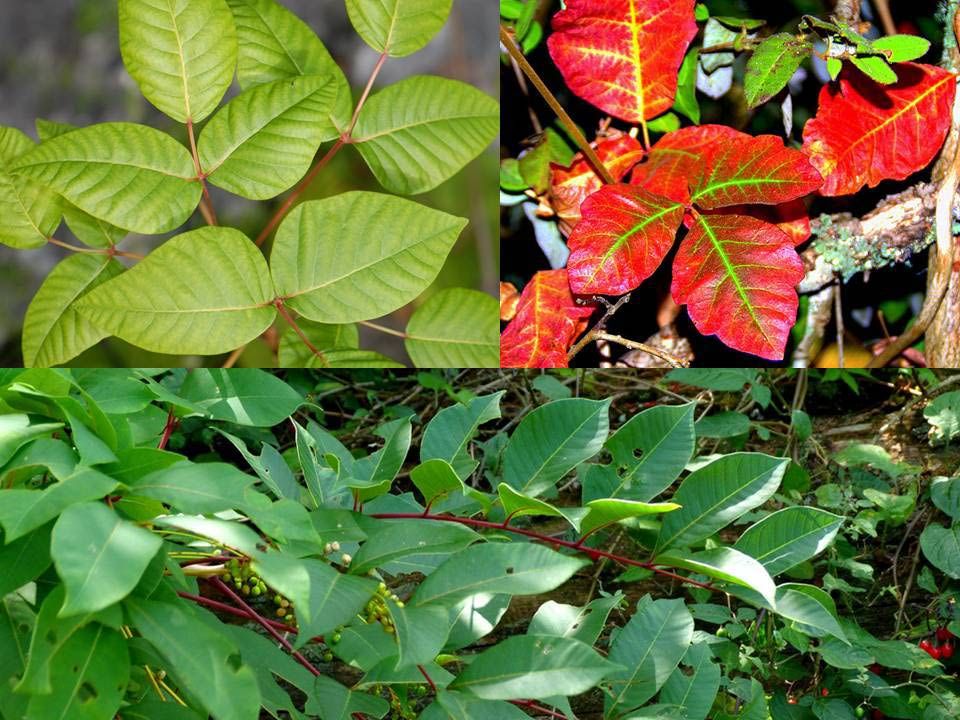 Keep a pair of shoes just for outside use and keep them outdoors. Try a lotion that has bentoquatam. It acts as a barrier between urushiol and your skin.
Keep a pair of shoes just for outside use and keep them outdoors. Try a lotion that has bentoquatam. It acts as a barrier between urushiol and your skin.
Fact. Urushiol begins to stick within minutes. If you know you’ve made contact with poison ivy, oak, or sumac, wash the area with lukewarm water and soap ASAP. If there’s no water, rubbing alcohol or alcohol wipes can remove it. Keep the area cool, dry, and clean. Wash your clothes and clean your boots or shoes. Hose down any garden tools that might have touched the plant.
Myth. But using them along with over-the-counter medicine can ease the itch and keep you more comfortable. Once a rash appears, keep it clean, dry, and cool. Calamine lotion, diphenhydramine, or hydrocortisone can help control itching. Cool compresses or baths with baking soda or oatmeal can also soothe the rash. Don’t scratch. It won’t spread the rash, but can cause scars or infection. Your doctor may suggest other treatments for your symptoms.
Myth. If someone in your household has poison ivy, oak, or sumac, you can’t catch it from them, even if you come into contact with the blisters. Just because you’ve never had a rash from one of these plants doesn’t mean you’re in the clear. Most people — about 85% — are allergic to urushiol. You can be affected by it at any age.
Myth. See your doc if the rash is close to your eyes or is widespread over your body. If needed, they can prescribe medications you take by mouth that will help with swelling and itching. Head to the emergency room if you have severe reactions in addition to the rash, like nausea, fever, shortness of breath, extreme soreness at the rash site, or swollen lymph nodes. Call 911 if you have any trouble breathing or feel faint.
Fact. A dog’s or a cat’s fur usually protects its skin from urushiol. But it can stay on the fur and rub off on you. If your pet explores areas where these plants are found, bathe them with soap and cool water.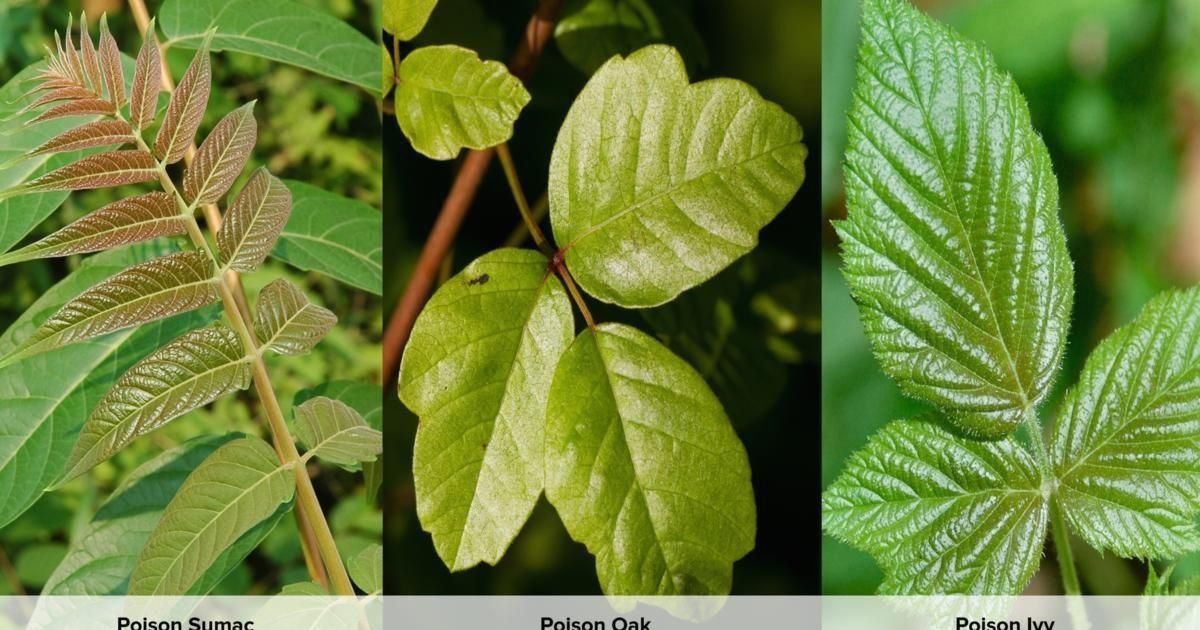 Be sure to wear gloves.
Be sure to wear gloves.
Myth. Don’t burn poison ivy, oak, or sumac. Particles of urushiol remain in the smoke and can aggravate your eyes, nose, and respiratory tract, and can land on the skin. Instead, dress appropriately and dig out the plants, getting as much of the root as possible. Put them in a plastic trash bag and throw it away. Have someone else do this if you’re super-sensitive to the plant. Some plant killers may work. Read the label carefully and use it at the right time of the year. Be careful — urushiol remains active, even on dead plants.
IMAGES PROVIDED BY:
1) Panoramic Images / Cameron Newell Photography
2) Charles D. Winters / Photo Researchers, Inc.; Jeri Gleiter / Taxi; John Sohlden / Visuals Unlimited
3) Bill Beatty / Visuals Unlimited
4) Rubberball
5) ear-man-inc/NEOVISION
6) Glow
7) Erik Von Weber / Stone
8) JupiterImages / Comstock
9) Thomas Jackson / Stone
10) moodboard RF
SOURCES:
American Academy of Dermatology: “Poison Ivy, Oak and Sumac. “
“
Asthma and Allergy Foundation of America: “Poison Plants.”
Occupational Safety and Health Organization (OSHA) Fact Sheet: “Working Outdoors in Warm Climates.”
University of Connecticut Integrated Pest Management: “Dealing With Poison Ivy.”
University of Oregon Health Center: “Facts & Fiction About Poison Oak and Ivy.”
© 2022 WebMD, LLC. All rights reserved. View privacy policy and trust info
Plants That Cause Rashes & Itching
We enjoy sharing all things poison ivy, but did you know there are other plants that can make you itch or may be potentially dangerous? We consulted the American Academy of Dermatology to get a list of common plants that cause misery.
Plants in the Garden
Fresh fruit and vegetables from the garden are wonderful, but some of their plants can make you itch. Strawberries, tomatoes, hot peppers and garlic can all cause rashes to those who are sensitive to them.
Strawberry and Tomato Plants
Hot Pepper and Garlic Plants
Rose hips, the round portion of the rose flower just below the petals, are commonly used in supplements and teas, but the plants can cause an irritating rash.:max_bytes(150000):strip_icc()/gettyimages-128591946-1-a3a3710bb16349c4bfa6ef30483e7385.jpg)
Rose Hips
The borage plant is used as a cooking herb, but it has stiff hairs that can penetrate the skin and cause a rash. Comfrey is also a member of the borage family and can cause an itchy reaction when handling the plant.
Borage and Comfrey
Remember to wear gloves when planting your winter bulbs! Tulip, hyacinth or daffodil bulbs can all make you itch.
Tulip, Hyacinth and Daffodil bulbs
Poisonous Plants to Avoid!
Some plants should be avoided altogether. They can be dangerous and cause more than just a minor rash.
Located along the Pacific Crest Trail in Southern California, the poodle-dog bush can cause a blistering rash similar to poison oak. If you come across the plant, you may be able to identify it by its strong smell.
Poodle-Dog Bush
Giant hogweed is likely found along streams, in fields and forests, and alongside the road. It is native to Southwest Asia and was brought to the USA in the early 1900’s to use as an ornamental plant.:quality(70)/cloudfront-us-east-1.images.arcpublishing.com/metroworldnews/R4334UXSGBHYXP7U35ATONYJUU.jpg) Giant hogweed can be dangerous as its sap can cause severe burns when exposed to sunlight and result in possible scarring.
Giant hogweed can be dangerous as its sap can cause severe burns when exposed to sunlight and result in possible scarring.
Giant Hogweed
Like giant hogweed, the sap from wild parsnip can cause a severe burning, blistering rash.
Wild Parsnip
Commonly mistaken for wild carrot or wild parsnip, poison hemlock can be very toxic to both humans and animals. This plant can be a problem in farmlands because the animals will eat it. Poison hemlock can also be found along creekbeds, irrigation and waste areas. All parts of this plant are toxic, so you want to steer clear of it.
Poison Hemlock
Even more potent than poison hemlock, water hemlock only requires a minimal amount of exposure to be poisonous to humans and animals.
Water Hemlock
Stinging nettle has hairy leaves that can causing itching and a painful rash when it comes in contact with skin. We have a longer post about nettle here.
Stinging Nettle
We must not forget our favorites, poison ivy, oak and sumac, which are well known for their rash-causing abilities.
Poison Ivy, Poison Oak, Poison Sumac
What to do?
As best practice, you should always wear protective gloves when handling potentially irritating plants and wash up as soon as possible when done. We, of course, also suggest cleaning up with Tecnu Outdoor Skin Cleanser to remove any dirt and oils from your skin.
Use plastic bags to cover a plant before you remove it and use a fresh plastic bag for each plant. Leave the plant inside the bag to dispose of it to avoid touching it in any way.
Cover your skin with long sleeves and pants to avoid contact with potentially harmful plants. This is good practice whether you are enjoying the outdoor trails or working in your own yard. Be sure to wash any exposed clothing before wearing it again.
Use a weed killer or white vinegar to destroy the plant’s roots to avoid having it grow again.
Burning “imprint”. What plants can be dangerous to humans? | HEALTH
Lilac Babayeva
Estimated reading time: 5 minutes
2347
No./pictures-of-poisonous-plants-2132624_FINAL-5b0ff62743a10300363c9ad0.png) 25. “Arguments and facts in Western Siberia” 06/22/2017
25. “Arguments and facts in Western Siberia” 06/22/2017
“Imprint” from plants. What plants can be dangerous to humans? AiF
With the onset of hot days, more and more Tyumen residents began to turn to doctors with burns, blisters, redness after contact with herbs. The influx of such patients occurs only in sunny, hot weather, and up to seven people consult only one dermatologist per day.
Mostly summer residents suffer from phytophotodermatitis, but any person can have a reaction from contact with plants after walking outside the city, swimming in flowering water and even walking barefoot on the grass. Doctors expect mass appeals during haymaking.
“Phytophotodermatitis combines two reactions at once: to the sun and plants. They are combined because the sun affects the plants. In hot weather, under the influence of sunlight, they release essential oils, and when a person sweats, his sweat gland ducts expand, which contributes to the penetration of the allergen from plants into the skin. That is why such diseases practically do not occur in cloudy weather, ”says Lyubov Makarova, a specialist in medical prevention at the regional Dermatovenerologic Dispensary.
That is why such diseases practically do not occur in cloudy weather, ”says Lyubov Makarova, a specialist in medical prevention at the regional Dermatovenerologic Dispensary.
Backache ordinary (sleep-grass) causes burns on the skin. Photo: From the personal archive / Elena Kozhina
Most often, such a reaction is caused by sedge, cow parsnip, primrose and others. These plants produce allergenic essential oils.
Without contact
As a rule, signs of illness appear immediately after contact with the plant or throughout the day, in some cases on the second or third day. After exposure to the allergen, edema may occur, after it – small bubbles, the opening of which leads to micro-ulcers with a clear liquid in the middle. Necrotic ulcers may appear on the skin, affecting not only the upper layers, but also extending deeper and leading to scarring. And after recovery, age spots may remain in this place.
Phytophotodermatitis blisters are often confused with signs of food allergies and even burns.
“Sometimes, patients come and say that they apparently burned themselves somewhere and did not notice it themselves, but in fact it is phytophotodermatitis,” says Lyubov Makarova.
Most often, the rash appears on the feet, hands and knees – in those areas that come into contact with the grass.
The treatment of the disease is individual and depends on the area and depth of the lesion. With phytophotodermatitis, the first thing to do is to stop contact with the plant that caused it. Most often, it is treated topically, with the help of ointments, lotions and powders. It is also forbidden to sunbathe at this time, both in the sun and in the solarium.
To prevent phytophotodermatitis, try not to contact the grass on sunny days, do not lie on it without bedding, try not to walk barefoot and not swim in a flowering pond.
Topic
Which herbs are better not to touch?
Hogweed
Its juice, if it comes into contact with the skin, can cause severe burns, up to I degree of severity.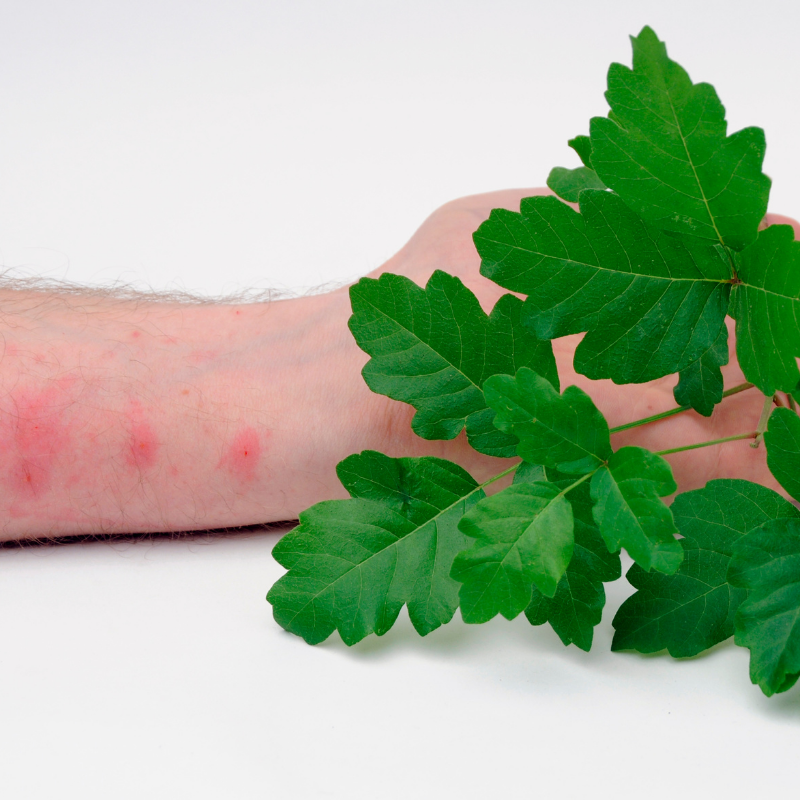 It is especially dangerous at the time of flowering in sunny weather. Sometimes, after a couple of minutes, under the influence of sunlight, in the place where the hogweed juice got into, inflammation begins and a bubble swells. With prolonged exposure, deep, long-term non-healing ulcers form, leaving scars.
It is especially dangerous at the time of flowering in sunny weather. Sometimes, after a couple of minutes, under the influence of sunlight, in the place where the hogweed juice got into, inflammation begins and a bubble swells. With prolonged exposure, deep, long-term non-healing ulcers form, leaving scars.
Larkspur (Delphinium)
Poisonous plant from the insidious ranunculus family. May cause allergic reactions (burning and itching) on contact with unprotected skin. If you are breeding delphiniums as ornamental flowers, wear gloves when handling them. And do not allow children to pick beautiful flowers.
Ash tree (burning bush)
The vapors of essential oil released during the maturation of seeds in the heat can severely burn even at a distance of up to two meters.
Meadow parsnip
Causes almost the same burns as hogweed. Once in the meadow, pay attention to light greens on 1.5-meter stems with inconspicuous flowers of the same color – do not touch it.
Buttercup
It is no coincidence that wild and domestic animals bypass these yellow flowers. The poisonous buttercup juice causes irritation, itching, and blisters on the skin. So it’s not worth collecting bouquets from them and even smelling them.
Backache (dream-grass)
Another relative of buttercup. Both wild and cultivated species are poisonous. The juice causes burns on the skin in the form of redness, blisters and abscesses.
Note
Which plants can cause phytophotodermatitis? Nettle, sedge, spurge, primrose, hogweed
See also:
- Irregular mushrooms. How not to cook them so as not to end up in the hospital →
- More and more Tyumen residents suffer from ultraviolet rays →
- At the forum “Family” we talked about the health of children →
poisonous plantsplants
Next article
You may also be interested in
The Second regional forum “Family” will be held in Tyumen
Biting sun.
 More and more UV-sensitive Tyumen residents
More and more UV-sensitive Tyumen residentsUseful – not useful. What medicinal herbs can be collected by yourself?
SMM marketing: how to make an event successful online
How much is labor. Is the voice of trade unions weak today?
News smi2.ru
Phytophotodermatitis – rashes from plants – Articles
Phytophotodermatitis – rashes from plants
in childhood, before a walk, did my mother tell us not to pick unfamiliar flowers and plants and not to climb into various thickets? And this was done for a reason, but because many plants that seem harmless can be very poisonous.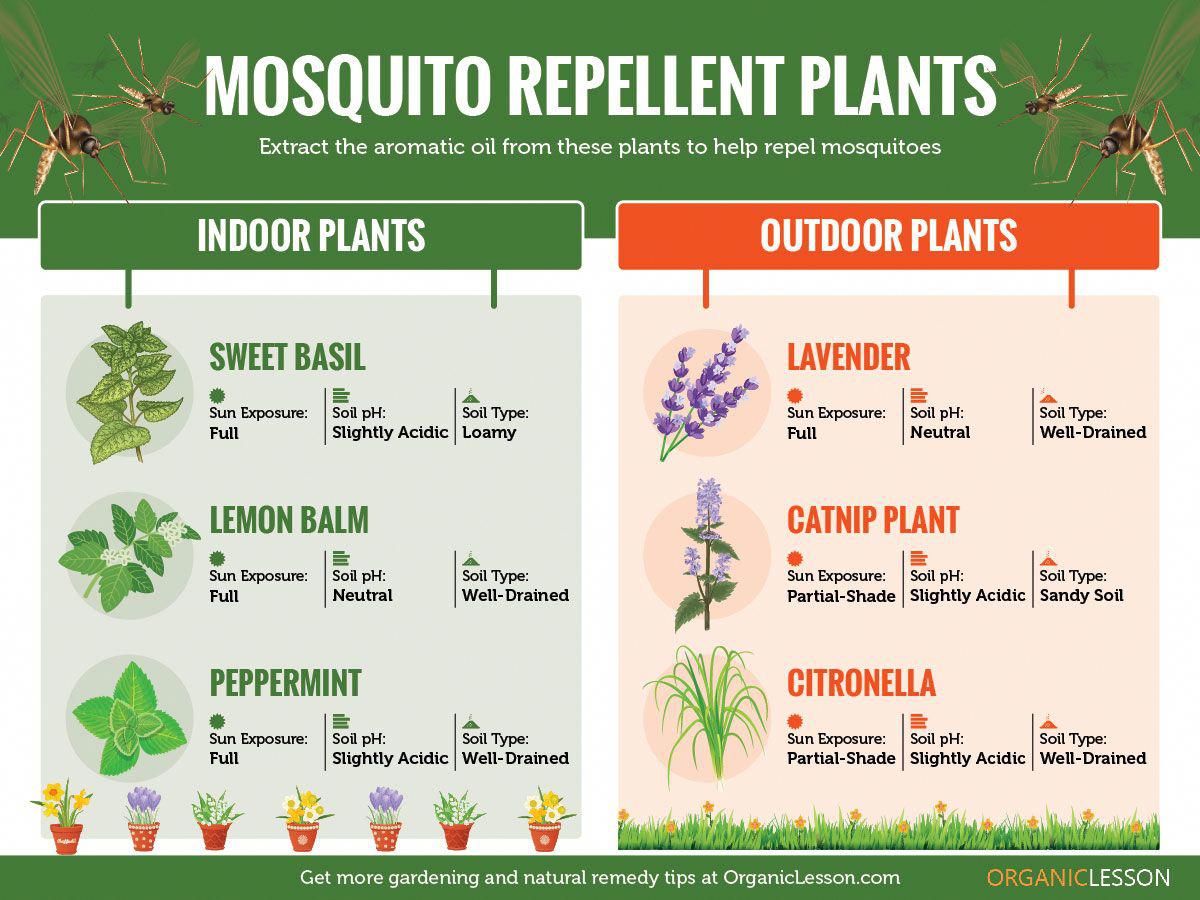 What is one cow parsnip worth. Such a beautiful name, but on contact you can get not just a burn, but phytophotodermatitis. And quite a lot of different plants are capable of this. Today in the article we will talk about what phytophotodermatitis is, what to do if contact has already happened, and we will also tell you which plants to be wary of.
What is one cow parsnip worth. Such a beautiful name, but on contact you can get not just a burn, but phytophotodermatitis. And quite a lot of different plants are capable of this. Today in the article we will talk about what phytophotodermatitis is, what to do if contact has already happened, and we will also tell you which plants to be wary of.
What kind of animal? Description
Phytophotodermatitis is a skin reaction to contact with a certain plant and parallel exposure to solar radiation. This reaction is caused by substances contained in plants – furanocoumarins.
Plants causing such a reaction belong to the families Umbelliferae, Rosaceae, Leguminous, Rue. For example, hogweed. In addition to hogweed, plants containing such substances include parsley, celery, parsnips, carrots, figs, limes, lemons, bergamot, and some types of wildflowers. Not all of these plants cause a strong reaction, but they may well.
Phytophotodermatitis occurs within 24 hours after contact with the plant, it is worth noting that contact may be short-term and unnoticed.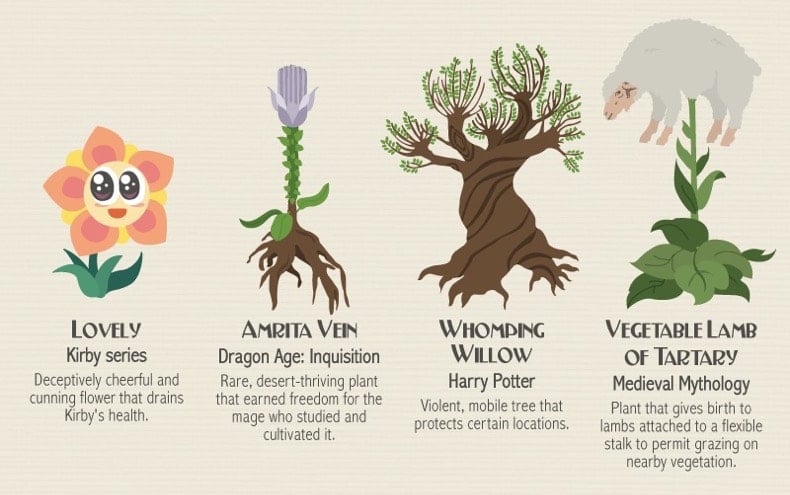 The strength of the reaction depends on the amount of plant juice, the concentration of furanocoumarins, or rather their compounds – psoralens in them, as well as the strength of ultraviolet radiation.
The strength of the reaction depends on the amount of plant juice, the concentration of furanocoumarins, or rather their compounds – psoralens in them, as well as the strength of ultraviolet radiation.
How does it manifest itself?
First, a person comes into contact with the juice of the plant, and then the affected area of the skin is exposed to the sun. After a few days, the skin area darkens in the form of spots that have clear boundaries. At this stage, discomfort is usually absent. After a while, blisters swell in this place, which in no case should be pierced. After the blister itself opens or the liquid inside it is absorbed, the bubble begins to hurt badly. The sensations are more like burning and pain than itching.
After a while, a trace of pigmentation remains in place of the blister, which is difficult to remove. Since it is almost impossible to influence the pigmentation, you can use protection from UV radiation so as not to aggravate the process.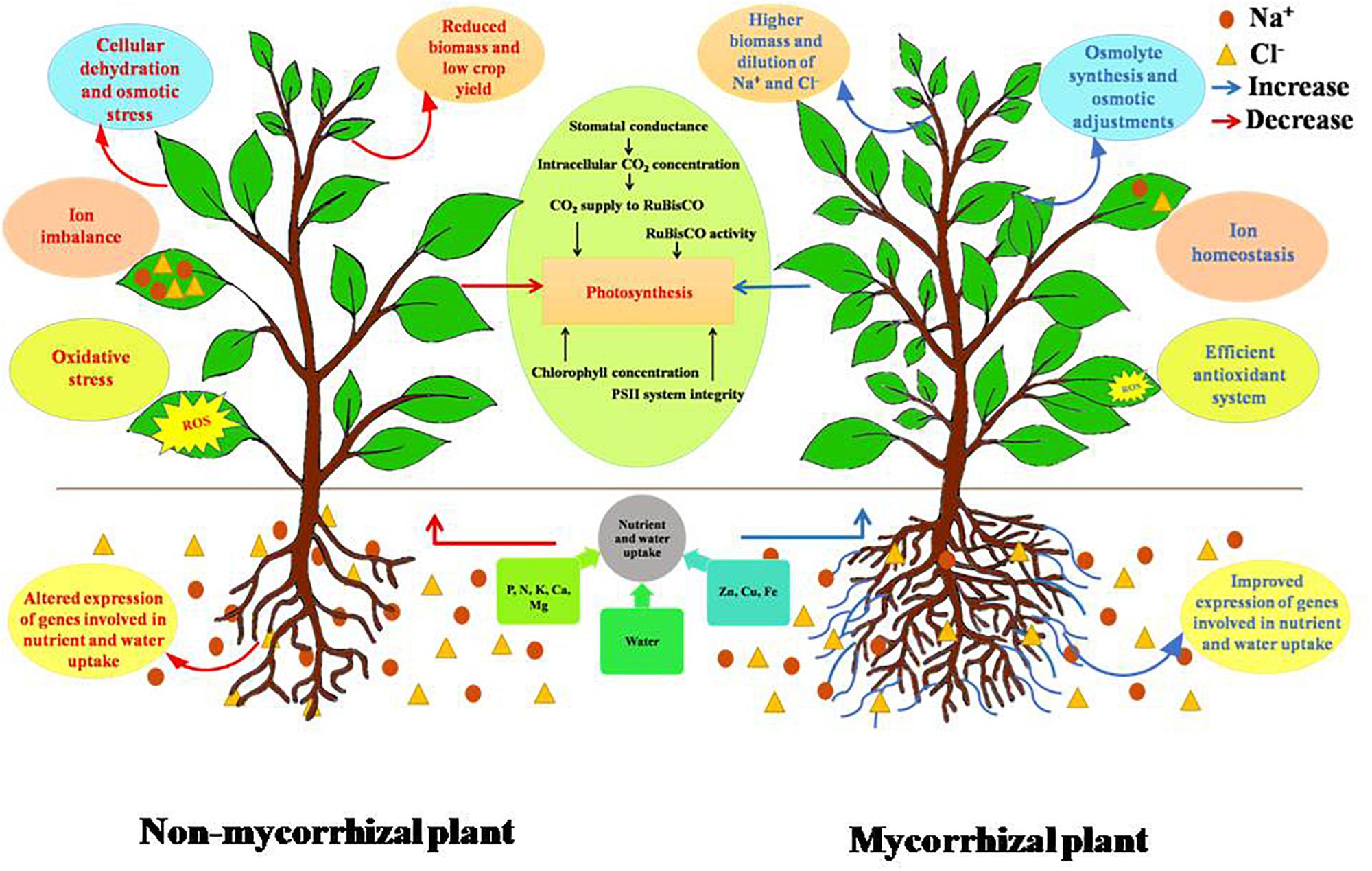 UV protection, by the way, protects against the appearance of phytophotodermatitis, it is important to use it before a walk.
UV protection, by the way, protects against the appearance of phytophotodermatitis, it is important to use it before a walk.
If phytophotodermatitis has already happened: algorithm
In the case when contact with the plant sap has already happened and you notice it, you need to wash the affected area as soon as possible with plenty of soap and water. Then, for the next 14 days, apply UV protection to the affected area and cover it with clothing, since it cannot be exposed to solar radiation, in order to avoid burns and phytophotodermatitis.
If contact happened, you did not notice it in time, but you already found blisters, then you should not open them, because not only will the place be very painful, but there will also be a risk of a secondary infection. You can wrap this place with a bandage so that mechanical damage does not happen.
After the blister resolves itself, the place where the blister is located will start to hurt and burn. Cold compresses can help relieve the condition. With severe rashes, anti-inflammatory steroid drugs, which will be prescribed by a doctor, will help. Since we cannot influence a significant regeneration process, it is necessary to relieve pain with ibuprofen or paracetamol and drink plenty of fluids.
Cold compresses can help relieve the condition. With severe rashes, anti-inflammatory steroid drugs, which will be prescribed by a doctor, will help. Since we cannot influence a significant regeneration process, it is necessary to relieve pain with ibuprofen or paracetamol and drink plenty of fluids.
If there is itching, redness, irritation, then topical corticosteroids will be the first-line drugs; in mild cases, cooling creams and talcs with zinc, Calamine lotion will help.
In some cases where lesions are very large, hospitalization and hospitalization may be necessary.
How to protect yourself?
If we are talking about our own garden plot, then it is necessary to eradicate poisonous plants, for example, cow parsnip. Be sure to tell the children and all family members about its harm and explain that its flowers, leaves, tops are not a toy, it is a danger and poison.
When destroying hogweed thickets, be sure to protect yourself with waterproof clothing with long sleeves and trousers.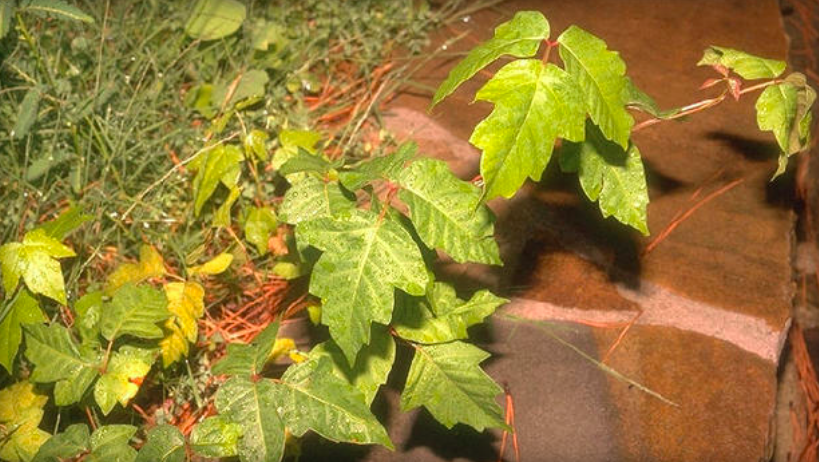 It is better to do this in cloudy weather, and pay attention to the UV index, the strength of the sun’s effect on the skin depends on its value.
It is better to do this in cloudy weather, and pay attention to the UV index, the strength of the sun’s effect on the skin depends on its value.
If there are no such plants on the site, but there are in the area, then be sure to instruct at home, especially with children, and remind them of the danger of such plants before the walk.
And don’t forget about UV protection, that is, creams. Choose a cream with maximum sun protection, i.e. SPF50. Creams, where the figure is above 50, is already a marketing ploy. It is important to renew your sunscreen every 2 hours of sun exposure.
So which plants are dangerous?
And now the most interesting thing – let’s talk about plants that can cause phytophotodermatitis. Not only hogweed is dangerous and poisonous.
- Sosnowski’s hogweed and ash. The juice of these plants contains furanocoumarins, which have a phototoxic effect, that is, they cause burns under the influence of the sun.

- Buttercup is caustic. Contains ranunculol, which can cause dermatitis.
- Marigolds. Yes, yes, those beautiful flowers in Grandma’s garden contain thiophenes, which cause phototoxic burns.
- Castor oil. The plant and all its parts contain ricin, which causes dermatitis. Especially a lot of this substance in the seeds. If swallowed, it causes severe poisoning.
- Ivy. It is also completely poisonous, causing burns and blisters, and if ingested, acute poisoning.
- Croton and spurge. The juice of these plants is similar to milk, when it comes into contact with the skin, it irritates it, and when it enters the body, it causes vomiting.
- Dieffenbachia. The juice of this plant is extremely dangerous if it enters the mouth, as it causes paralysis of the ligaments and loss of voice.
- Primula. It contains alkaloids that cause nausea and dizziness, and the juice of leaves and flowers can cause dermatitis.
Phytophotodermatitis is a skin reaction to contact with a poisonous plant and simultaneous exposure to solar radiation.

 More and more UV-sensitive Tyumen residents
More and more UV-sensitive Tyumen residents